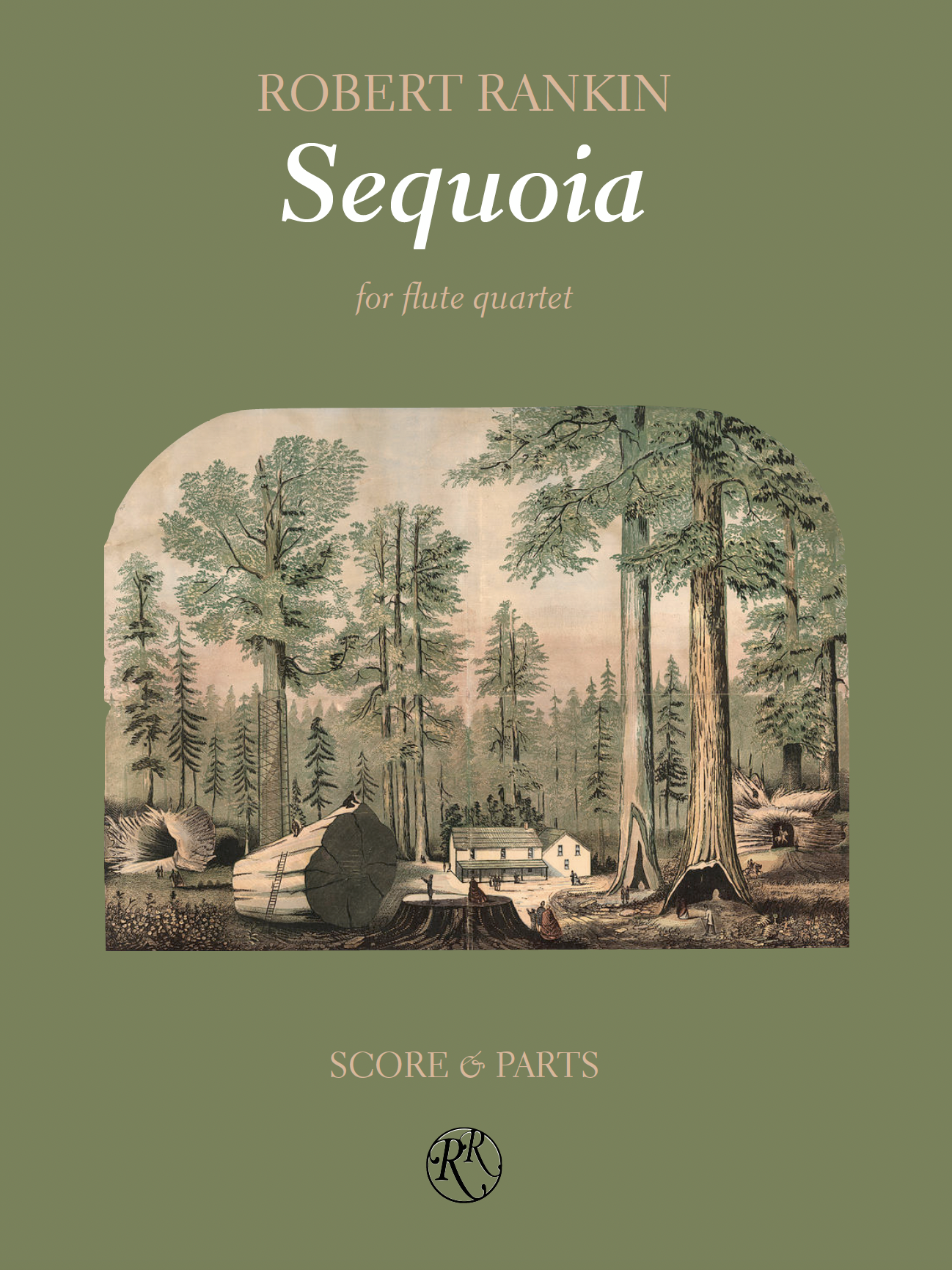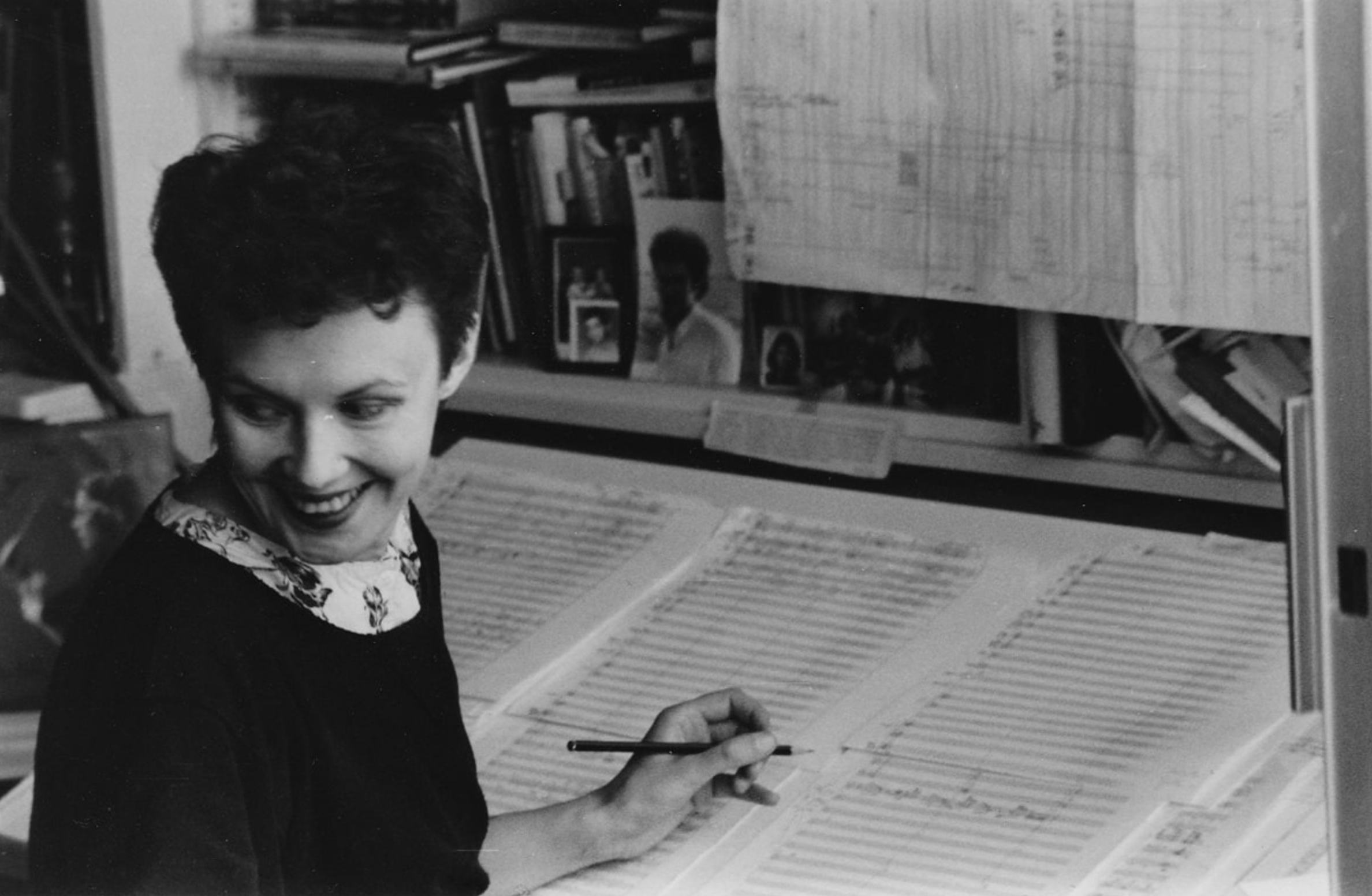Recent Works
Lassus, Trees, and two Quartets
This summer and early autumn, has turned out to be one for wind quartets. Not some kind of odd configuration of a wind quintet minus one—sadly the horn in most cases—but quartets of like instruments. The first, Sequoia, is for a quartet of flutes, two C flutes and two alto flutes. The piece is the second in what has become a set of pieces about the American West; its landscape, mythology, and history. I moved to “The West” during the course of writing this piece, which similarly moved me from the artistic category of people who think about “The West” versus people who actually pack up and move out there. I never considered myself to be part of that latter category, but here I am typing this in Utah.
The initial impulse behind the piece came from Richard Powers’ 2018 novel The Overstory, in which Powers movingly personifies the life of trees. Using recent discoveries in the natural sciences, Powers writes about how trees, using complex root systems, communicate and protect one another. This natural communication method, as well as the concept of seeing a great forest as both something that is individual yet densely connected, inspired the musical material in Sequoia. The piece is made up of a series of breathy, intertwined, seemingly endless melodic lines that ever so gradually morph over time.
The other quartet, a sax quartet entitled Three Prophecies, functions as a kind of compositional etude for myself; a sort of study for a much larger piece (more to come…you can feel the anticipation). I took three motets from Orlando de Lassus’s Prophetiae Sibyllarum (or Sibyilline Prophecies), a collection of twelve harmonically slippery motets composed around 1550, and arranged them but with a kind of blurry element added on. It is almost as though I added some musical dust on top of these pieces which, over the course of each movement, gets blown off revealing a clearer version of each motet. The quartet will be premiered, in a bit of really clever thinking by saxophonist Derek Granger, not with four players but with an ensemble of saxophones which I’m sure will give the piece an even more motet-y quality, which I’m really looking forward to hearing. His ensemble, the Tarleton Saxophone Ensemble will premiere the work next year at the 2024 NASA Biennial Conference at Oklahoma State University.
In Stock
WEBSITE UPDATE, 6/22/23: Everything in the store should be all in stock and running smoothly. If there seems to be a problem, please don’t hesitate to shoot me an email here and I will get to fixing the problem. Now time to fill that near empty coffee mug.
For Kaija Saariaho (1952-2023)
THE FRENCH COMPOSER AND TEACHER Olivier Messiaen was once asked what was the most important ability for a composer to possess. He pointed to his ears. “You have to hear,” he replied. This might seems like a flippant response. Chefs learn to taste, visual artists learn to see, musicians learn to hear. But what he meant was that a composer, a true composer, must perceive the profound nuances of every pitch, rhythm, timbre deep inside of them and be uncompromising in the transference from the inner ear to the page. This kind of intense internalized hearing also meant that the composer understands how and when to manipulate one of those elements and the fathomless consequences that arise like falling dominoes.
The Finnish composer Kaija Saariaho, who died last week, could truly hear. She was able to conjure up new sounds and colors that were at once both original and organic. Her spare melodies all seemed to have their roots in a much older music. Like old chants, the same collection of three or four notes would reoccur in new orderings like a musical Rubik’s cube. They emerged seamlessly from the harmonies that had their roots in the manipulation of the overtone series. These harmonies would shimmer and buzz due to a finely wrought sense of orchestration.
In Saariaho’s music, the harmony is the orchestration. The melody is the timbre. Each element succeeds on an emotional level because of their dependency on one another.
No matter what she was writing—solo works, operas, orchestral tone poems, concerti—her music always had a deep radiance and a glow. This light infused sound likely came from her early obsession with nature of her native homeland of Finland, much like the reigning figure that towers over all Finn composers, Jean Sibelius. She escaped that shadow, consciously or not, by relocating to France. Her music, most notably her operas, fit naturally into the French canon. Her major operas, L’Amour de Loin, Adriana Mater, Innocence, are not derivative, but sit confidently along side other French masterpieces such as Messiaen’s Saint Francis of Assisi (an opera she cited as the work that proved to her that she could tackle the form) and Debussy’s Pelleas et Melisande. When I heard the news of her death, my gut reaction was that she was the most important French composer since Messiaen…but not actually French.
She is, in my opinion, at her best as an opera composer. She was able to convey myriad emotional states with a single chord; a chord, mind you, that had been subjected to masterful orchestration and an acute sense of pacing. Take for example her most recent, and I dare not write this word, final opera Innocence. The story revolves around the aftermath of a school shooting and the wedding, years later, of the shooter’s brother. A woman, who is still haunted by her daughter that died in the shooting, is catering the reception. When the moment comes early in the opera that the mother realizes who she is serving, the music morphs into a static, yet pliable, stomach churning chord that hovers in space, full of dread and anxiety. It moves slowly and methodically. Off-stage vocies mutter, slide, and echo the orchestra. It is suffocating in its transparency. (I remember turning to my partner during this sequence, “she has found the simplest and most effective way to musicalize a panic attack.”). What follows is a ever shifting series of personal reflections, flashbacks, and confrontations.
In the final sequence of the opera, the ghost of the daughter comes to her mother and tells her, as best as she can, to let go. Sever the smoldering parental ties that remain and live her own life. The music gradually wedges outward to the quiet extremes of the orchestras range, the very top and bottom of the instrumental forces. It murmurs in the lowest contrabasses and delicately pierces in the highest piccolos. The mother and daughter are left, not with a heart-felt reconciliation, but in a dark, uneasy vastness. Harmonically, the opera is complete (the bass having returned to the C of the opening), but emotionally, the music seems to imply that there is no reconciliation possible. A child who preceded a parent in death, the ultimate nightmare, is a grief that is unending. The music and the characters cannot let go.
One can imagine these moments in the hands of a lesser composer: a rapid fire torrent of scurrying strings depicting anxiety, a lush mother/daughter leitmotif in four octaves uniting their love across realms—a bad Liebestod. These choices could all work in some sense. But Saariaho’s ability to be understated and nuanced. Look at any page of a Saariaho opera score and you will find that at the moments of heightened intensity, very few orchestral instruments are deployed. The orchestral landscape if oftentimes quite still in these sequences, like when people tune out the world or get a deep ringing in their ears when they suddenly realize something terrible has happened. This operatic subtlety, a trait rarely associated with most canonical operas, made each of her stage works that much more terrifying, heartbreaking, and awe-inspiring. Saariaho was able to do in opera what Proust said was at the heart of any great art. Great art, Proust said, goes to a place where the reader (or listener) progresses beyond the wisdom of the creator and discovers their own.
Concerto for Wind Ensemble
Rehearsals began yesterday on my heftiest child to date, my Concerto for Wind Ensemble. Coming in around 18-20 minutes, it’s the final piece in a series of works (Deep State, Make Them Dance, The Economies of Action) about how the internet has shaped our contemporary world. In the case of this piece, how lies and conspiracy theories have eroded the social fabric of, not only America, but democracies around the world. The basic form of the piece is little bits of musical material—online chatter if you will—spread to neighboring instruments until the whole ensemble is manipulated by this seemingly insignificant musical idea. The “concerto for [insert large ensemble here]” format, in my minds eye, is a type of analog for this process of online disinformation: one single solo thread initiates an idea which then spreads until it is too unwieldy and wild to control. After a series of misinformation cycles that shows off, I think, nearly every section of the wind ensemble, there is a final escape to a kind of calm, pastoral, pre-iPhone space near the end. That musical world does not last, and the final moments of the piece linger in a kind of weightless, ambiguous no man’s land.
I’m really looking forward to working with the Indiana University Wind Ensemble on this piece and I’m sure the concert (April 11th at 8PM) will be great (complete with works by Dahl, Sousa, and my teacher Don Freund). It will also be LIVE-STREAMED, as is tradition in 2023, so you can enjoy the piece from the comfort of wherever!
The New & The Noteworthy
With the new year now in full swing, I thought I would share some performances/premieres from the past year! First, Erica Spear and Guzal Isametdinova performing my flute sonata, Drifts and Currents, at the University of Maryland in March. The more I look back on this piece, the more I come to realize just how taxing the piece is! So with that being said, a major tip of the hat to both of them for not merely surviving, but for playing the sonata with nuance and care. Second, a short, frenetic ensemble work, The Economies of Action—a chunk of which crops up in my forthcoming Concerto for Wind Ensemble—inspired by Shoshana Zuboff’s masterwork The Age of Surveillance Capitalism. Finally, a slow mediation on the idea of the American West, Far West. The quartet, which can be boiled down to a simple G major chord, unfolds gradually by way of ever increasing gentle leaps and descents.
In other news, if you are a flute player or even a friend of a flute player (and aren’t we all), I’m starting work on a new piece for flute quartet or solo flute with pre-recorded electronics and opening the commission up to create a consortium. The new piece will musically live in the world of my string quartet Far West. In this case, a mediation on trees as well as on Richard Powers’ extraordinary novel from a few years ago, The Overstory. More information on the consortium can be found here.
Drifts and Currents: for flute and piano (2017)
Far West: for string quartet (2022)
The Economies of Action: for five players (2021)










